Removing an above ground pool ladder may seem like a daunting task, but it is essential for maintaining your pool’s cleanliness and appearance. Whether you are closing your pool for the season or just need to remove the ladder for cleaning, it is important to follow the proper steps to ensure a safe and successful removal.
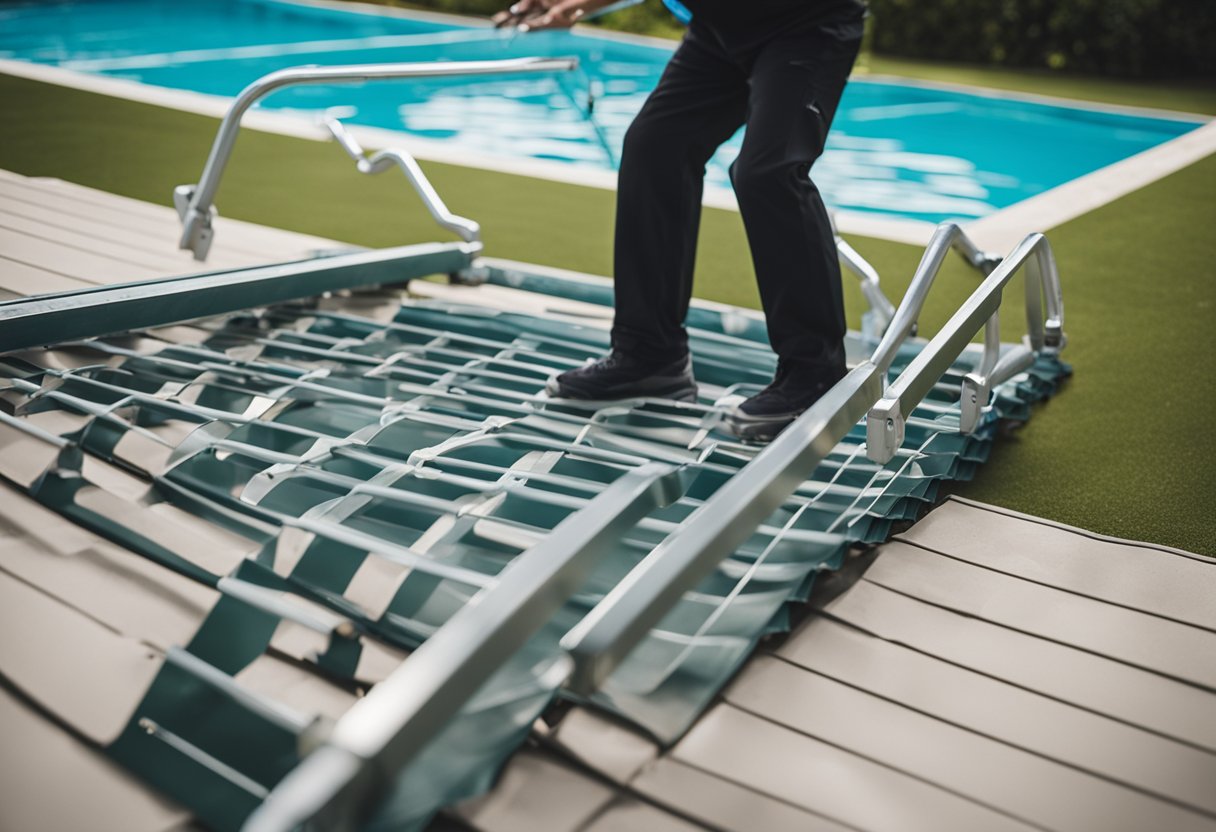
Understanding the type of above ground pool ladder you have is the first step in removing it. There are various types of ladders, including A-frame, deck mounted, and in-pool ladders. Each type requires a different approach to removal, so it is important to identify which type you have before proceeding. Once you have identified the type of ladder, you can begin preparing for its removal by gathering the necessary tools and materials.
Key Takeaways
- Understanding the type of above ground pool ladder is crucial for safe removal.
- Proper preparation and tools are necessary for successful ladder removal.
- Regular cleaning and inspection of the pool ladder can help prevent rust and damage.
Understanding Above Ground Pool Ladders
As a pool owner, it is important to understand the different types of above ground pool ladders available in the market. Above ground pool ladders are essential for getting in and out of your pool safely. They come in various designs and styles, including a-frame ladders, steps, and handrails.
One of the most common types of above ground pool ladder is the a-frame ladder. These ladders are designed to be placed on the edge of the pool and have two sides that extend into the water. They are easy to install and remove, making them a popular choice for pool owners.
Another type of above ground pool ladder is the step ladder. These ladders are designed to be used with above-ground pools that have decks. They are typically made of durable materials such as aluminum or stainless steel and can support a significant amount of weight.
Handrails are also an important component of above ground pool ladders. They provide additional support and stability when entering or exiting the pool. They are typically made of stainless steel or aluminum and are designed to be rust-resistant.
When choosing an above ground pool ladder, it is important to consider factors such as safety, durability, and ease of use. Look for ladders that are sturdy and have slip-resistant treads. Additionally, make sure the ladder is compatible with your pool’s size and shape.
In summary, understanding the different types of above ground pool ladders available in the market is essential for pool owners. Whether you choose an a-frame ladder, steps, or handrails, make sure to prioritize safety, durability, and ease of use when making your selection.
Preparation for Ladder Removal
Before removing an above ground pool ladder, it is important to take certain precautions to ensure that the process goes smoothly and safely. Here are the steps I take to prepare for ladder removal:
-
Safety first: Before starting the ladder removal process, I make sure to turn off the pool pump and filter to avoid any accidents. I also wear protective gloves to prevent any injuries from sharp edges or rusted metal.
-
Necessary tools: To remove the ladder, I use basic tools that can be found in most households. These include a screwdriver, wrench, pliers, and a socket wrench. I make sure to have all the tools nearby before starting the process.
-
Drain the pool: It is important to drain the pool to the level below the ladder before removing it. This will make the process easier and prevent any water from getting into the ladder’s anchor sockets.
-
Loosen nuts and bolts: I use a wrench or pliers to loosen the nuts and bolts that hold the ladder in place. If the nuts and bolts are corroded or rusted, I apply penetrating oil to loosen them before attempting to remove them.
-
Remove the ladder: Once the nuts and bolts are removed, I carefully lift the ladder out of the pool and place it on a flat surface. I make sure to clean the area where the ladder was located to prevent any debris or rust from getting into the pool water.
By following these steps, I can safely and efficiently remove an above ground pool ladder without causing any damage to the pool or surrounding area.
Steps to Detach the Pool Ladder
Removing an above-ground pool ladder may seem like a daunting task, but with the right tools and techniques, it can be done easily. In this section, I will guide you through the steps to detach the pool ladder from the deck.
Step 1: Gather the Necessary Tools
Before you begin, make sure you have all the tools you’ll need for the task. These may include a wrench, pliers, screwdriver, and a ladder if necessary. Having the right tools at hand will make the process easier and more efficient.
Step 2: Loosen the Fasteners
The first step in removing the ladder is to loosen the fasteners that hold it in place. Depending on the type of ladder you have, this may involve unscrewing bolts, removing screws, or loosening nuts. If the ladder is attached to an anchor socket, you may need to use a wrench to loosen it.
Step 3: Remove the Ladder
With the fasteners loosened, it’s time to remove the ladder from the deck. If the ladder is stuck, you may need to wiggle it back and forth to loosen it. It is recommended to have at least one other person help you with this step, as pool ladders can be heavy and awkward to move.
Step 4: Store the Ladder
Once the ladder is removed, store it in a safe place until you are ready to use it again. It’s important to keep the ladder clean and dry to prevent rust and other damage.
In conclusion, removing an above-ground pool ladder is a simple task that can be done with the right tools and techniques. By following these steps, you can detach the ladder from the deck and store it safely until you need it again.
Cleaning and Inspection of the Ladder
As a pool owner, it is important to regularly clean and inspect your above ground pool ladder to ensure its longevity and safety. Over time, debris such as leaves, dirt, and insects can accumulate on the ladder, making it slippery and dangerous to use. To avoid any accidents, I recommend cleaning the ladder at least once a month during the swimming season.
To clean the ladder, I suggest using a mild detergent and a soft brush to remove any dirt or grime. Make sure to rinse the ladder thoroughly with water after cleaning to remove any soap residue. If there is any corrosion or rust on the ladder, use a mixture of vinegar and water to remove it. Simply apply the solution to the affected area and scrub gently with a soft brush.
In addition to cleaning, it is also important to inspect the ladder for any signs of wear and tear. Check for any loose or missing bolts, cracks, or other damage that may compromise the ladder’s stability. If you notice any issues, make sure to address them immediately to prevent any accidents.
Finally, if you have hard water in your area, you may notice mineral deposits on the ladder. To remove these deposits, I recommend using a mixture of vinegar and water. Simply soak a cloth in the solution and apply it to the affected area. Let it sit for a few minutes, then rinse the ladder thoroughly with water.
By regularly cleaning and inspecting your above ground pool ladder, you can ensure its safety and longevity.
Storing the Pool Ladder
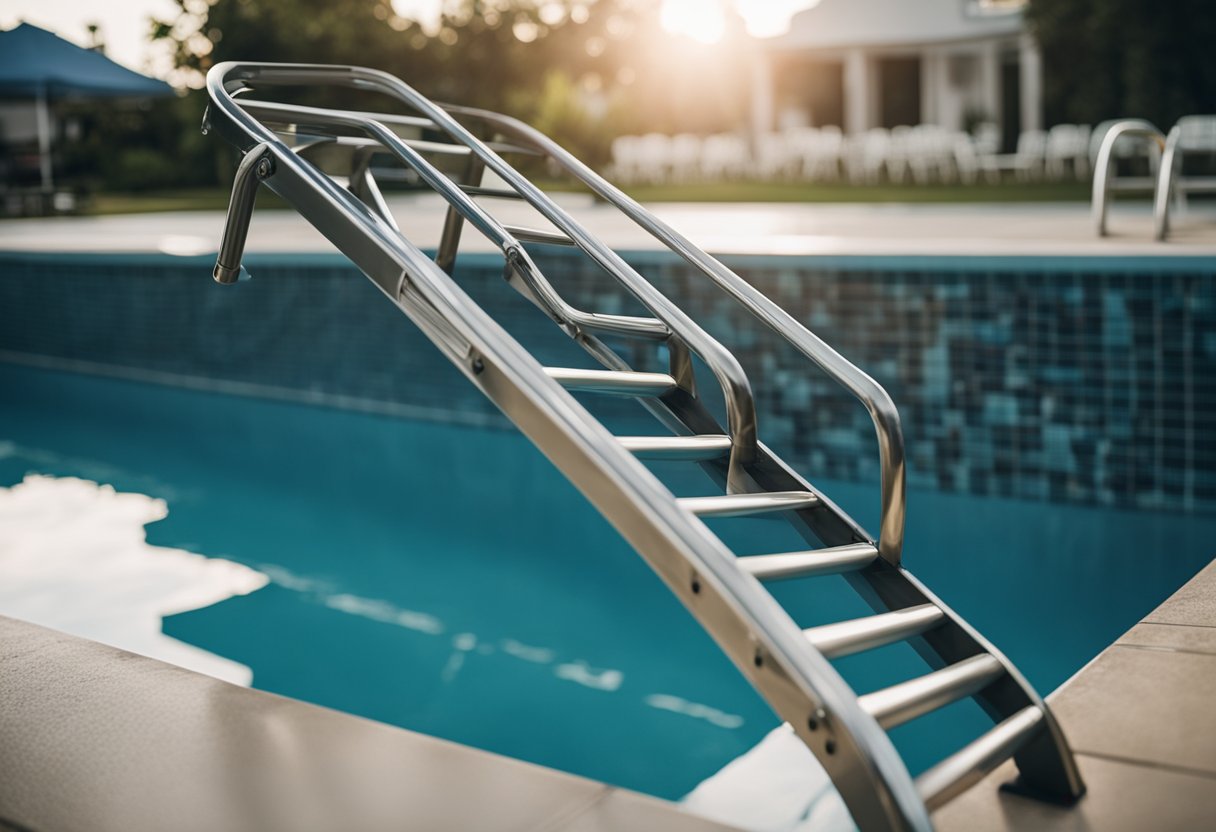
Once you have removed the above ground pool ladder, it’s time to store it properly. Proper storage ensures the longevity of the ladder and reduces maintenance costs.
The first step is to clean the ladder. Get rid of all debris, dirt, or algae from the rungs of the ladder using water and mild soap. A clean pool ladder stored properly ensures longevity and reduces maintenance costs.
Next, find a dry and secure area to store the ladder. Ideally, place the ladder horizontally on a flat surface, or if space is limited, hang it on a wall or ceiling using sturdy brackets. Avoid storing the ladder in direct sunlight or extreme temperatures, as this can cause damage over time.
If you are storing the ladder for the winter season, consider covering it with a tarp to protect it from the elements. Make sure the ladder is completely dry before covering it with a tarp.
If you have a garage or basement, these are ideal places to store the ladder. Make sure the ladder is not in the way of any other items that may be stored in the same area. If space is limited, consider storing the ladder vertically to save space.
In summary, storing your pool ladder properly is essential for its longevity and to reduce maintenance costs. Clean the ladder, find a dry and secure area, and avoid storing it in direct sunlight or extreme temperatures. With proper storage, your pool ladder will be ready to use for many swimming seasons to come.
Reinstalling the Pool Ladder
Now that you have successfully removed the pool ladder from your above-ground pool, it’s time to reinstall it. Before you begin, make sure you have all the necessary tools and equipment, such as a ladder removal kit, wrench, and pliers.
The first step is to inspect the ladder to ensure it is in good condition and free from any damage. Check the bolts and handrails to make sure they are secure and not loose. If any parts are damaged, replace them before reinstalling the ladder.
Next, position the ladder on the pool deck where it was previously installed. Make sure the ladder is level and in the correct position. It’s important to note that the ladder should be installed on a flat and stable surface to prevent accidents.
Once the ladder is in place, use a wrench to tighten the bolts and secure the ladder to the pool deck. Make sure the ladder is stable and can support the weight of the swimmers.
Finally, test the ladder by applying pressure to it and making sure it is secure. If the ladder feels loose or unstable, tighten the bolts further or adjust the position of the ladder.
In conclusion, reinstalling an above-ground pool ladder is a straightforward process that requires a few basic tools and equipment. By following these simple steps, you can ensure the safety of your swimmers and enjoy your pool with confidence.
Safety Measures and Precautions
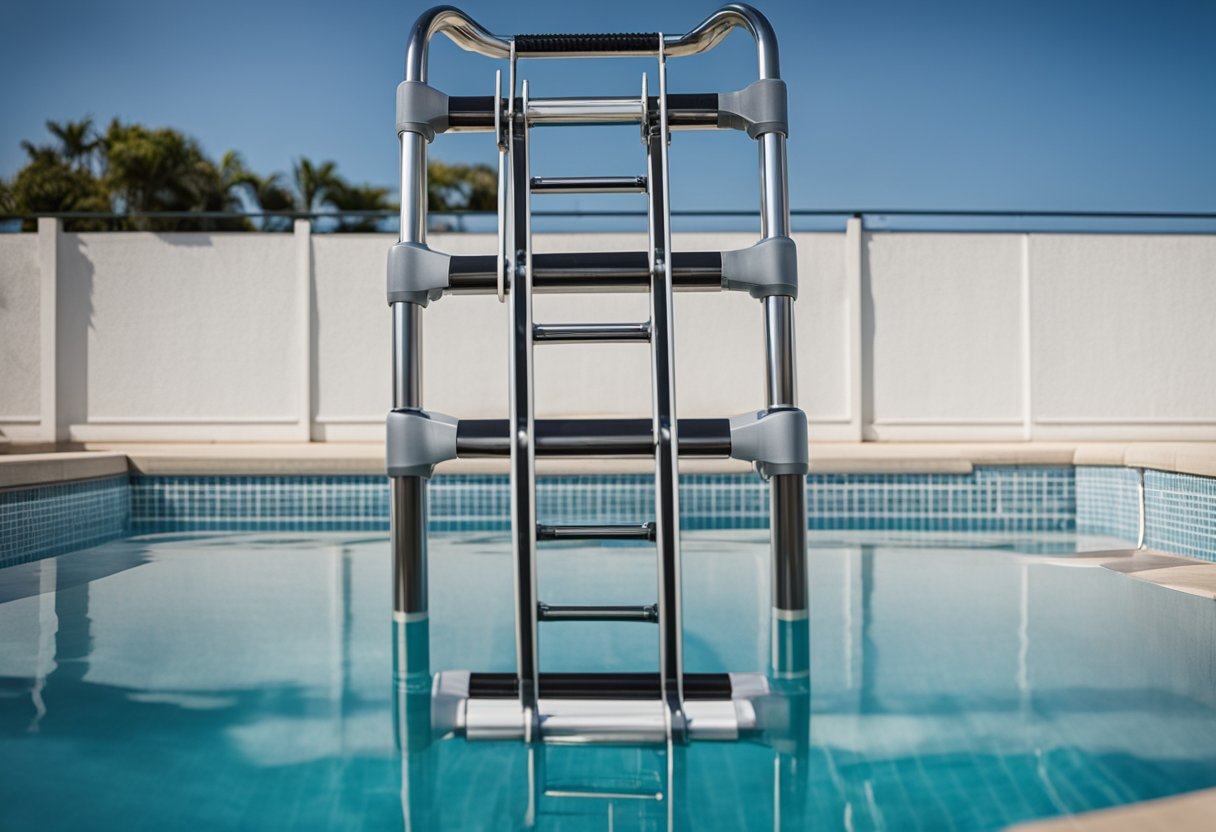
As with any pool-related activity, safety should be a top priority when removing an above ground pool ladder. Here are some precautions to take to ensure a safe removal process.
Tripping Hazards
Before starting the removal process, make sure that the area around the ladder is clear of any tripping hazards. This includes toys, pool accessories, and any other debris that may be lying around. Clearing the area will help prevent any accidents and ensure a smooth removal process.
Slippery Surfaces
Pool areas can be slippery, especially when wet. To prevent slipping, it’s important to wear appropriate footwear with good traction. Additionally, make sure to dry the area around the ladder before attempting to remove it.
Proper Lifting Techniques
Above ground pool ladders can be heavy and awkward to maneuver. To prevent injury, it’s important to use proper lifting techniques. This includes lifting with your legs, not your back, and keeping the ladder close to your body while lifting.
Harsh Weather Conditions
If you’re removing a pool ladder during harsh weather conditions, such as high winds or heavy rain, it’s important to take extra precautions. Make sure to have a partner assist you with the removal process, and make sure to dry the area around the ladder before attempting to remove it.
In summary, taking the proper safety measures and precautions can help ensure a safe and successful above ground pool ladder removal process. By being aware of potential tripping hazards, using proper lifting techniques, wearing appropriate footwear, and being cautious during harsh weather conditions, you can help prevent accidents and injuries.
Conclusion
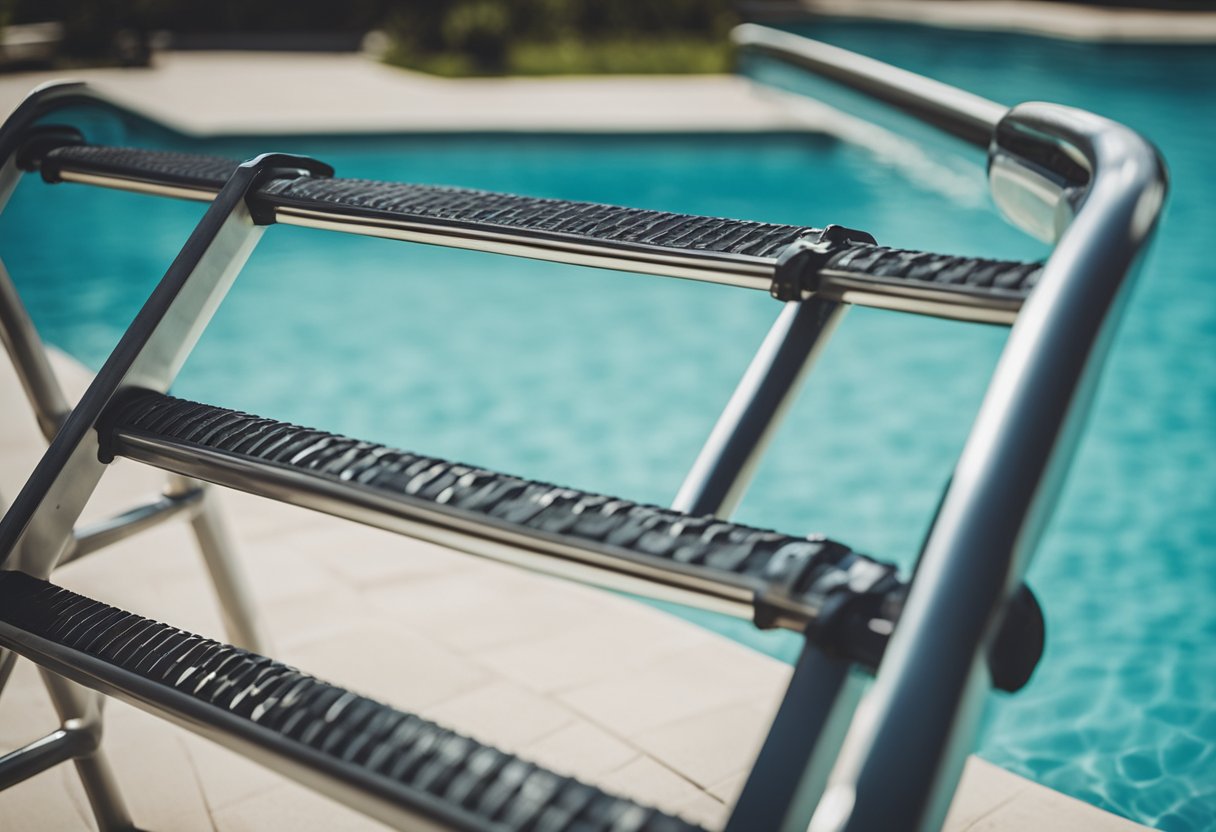
Removing an above ground pool ladder is a relatively straightforward process that can be done with the right tools and a little patience. By following the step-by-step instructions outlined in this guide, you can safely remove and store your pool ladder, keeping it in good condition for future use.
It’s important to note that regular maintenance of your pool ladder will help prolong its lifespan. This includes cleaning it regularly to prevent buildup and debris from accumulating, as well as checking for any signs of wear and tear. If you notice any damage or deterioration, it may be time to replace your ladder.
While it is possible to remove your pool ladder on your own, it’s always a good idea to seek professional assistance if you are unsure about the process or if you encounter any difficulties. A professional can help ensure that the ladder is safely removed without causing any damage to your pool or surrounding area.
In summary, removing an above ground pool ladder is a simple process that can be done with the right tools and knowledge. By following the steps outlined in this guide, you can safely remove your ladder and keep it in good condition for future use.
Frequently Asked Questions
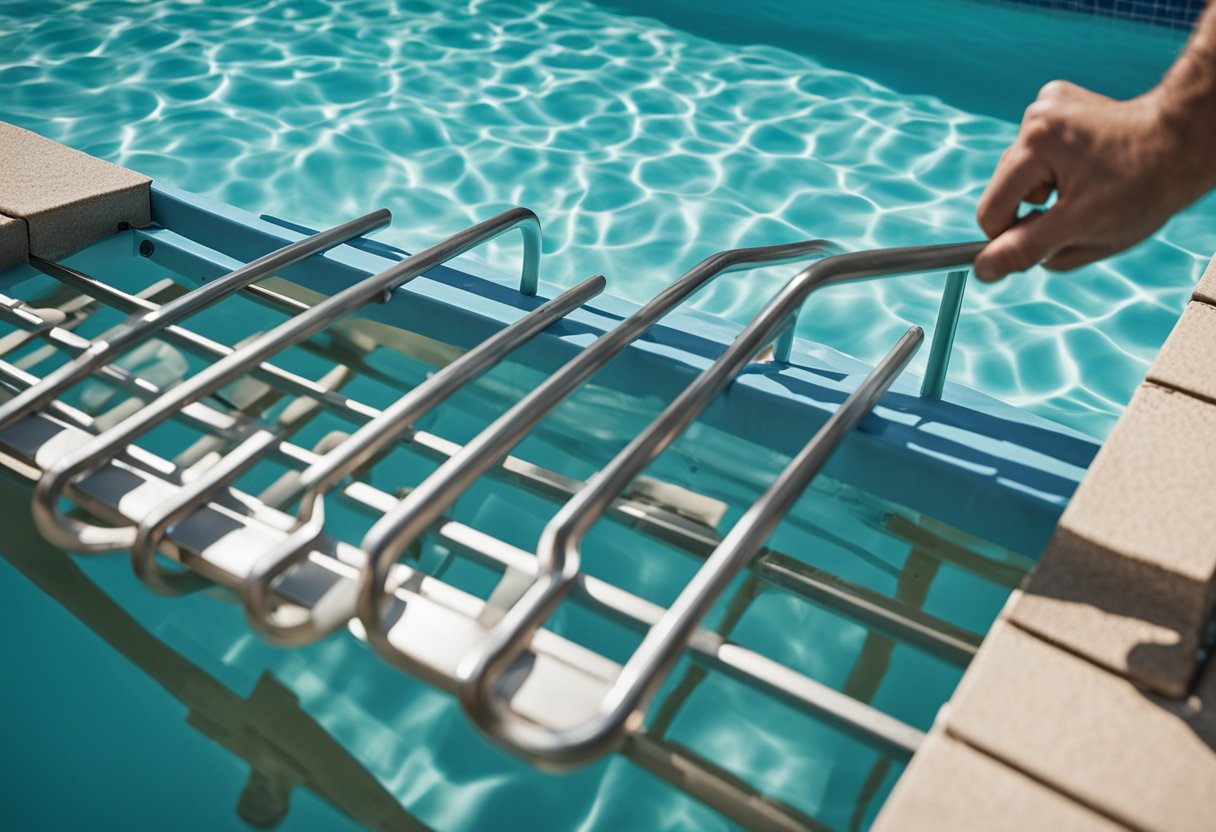
How do you remove above-ground pool stairs?
To remove above-ground pool stairs, you need to first drain your pool and clean the surrounding area. Then, you can unscrew bolts from each joint carefully with an appropriate wrench. Some models may have more than one bolt on each side so ensure they are all removed before proceeding further. Once the bolts are removed, carefully lift the stairs out of the pool.
What is the process for winterizing Confer pool steps?
The process for winterizing Confer pool steps involves draining the pool and removing the stairs. Clean the stairs with a mild detergent and rinse them thoroughly. Once they are dry, store them in a dry, cool place. Make sure to inspect the stairs for any damage before storing them.
Can plastic stairs be left in above-ground pool over winter?
It is not recommended to leave plastic stairs in the above-ground pool over winter. Freezing temperatures can cause the plastic to crack or warp, which can lead to costly repairs or replacements.
How do you lift stairs out of an above-ground pool?
To lift stairs out of an above-ground pool, you can use a pool ladder or a second person to help lift the stairs out of the pool. Once the stairs are out of the pool, carefully place them on a flat surface and inspect them for any damage.
Can an above-ground pool be removed without professional help?
Yes, an above-ground pool can be removed without professional help. However, it is important to follow the manufacturer’s instructions and take all necessary safety precautions. It is also recommended to have a second person to help with the removal process.
What are the instructions for Confer pool steps?
The instructions for Confer pool steps may vary depending on the model. It is important to read the manufacturer’s instructions carefully and follow them step-by-step. If you have any questions or concerns, contact the manufacturer for assistance.

Hi, I’m Sal Muller of Tooltrip.com. My DIY experience led me to understand essential power tools for home projects. Tooltrip.com guides enthusiasts and professionals in choosing right tools for any job. I provide concise top tool reviews for easier, efficient DIY.

